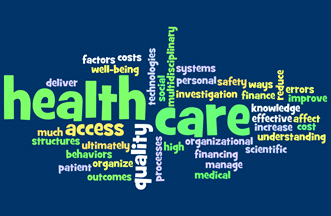
Access to comprehensive, high quality well being care services is essential for the achievement of well being fairness and for rising the standard of a wholesome life for everyone. This topic area focuses on 4 parts of access to care: coverage, companies, timeliness, and workforce.
Important Issues. As described in Chapter 2 , physicians have been active in school well being packages to varying levels for the reason that mid-nineteenth century. The boundaries between non-public medical apply and school health applications, which arose through the period of the National Education Association-American Medical Association alliance from the Twenties to the 1960s, are actually beginning to vanish, and colleges are receiving increased consideration as strategic sites for health promotion and entry points for primary care. In order to satisfy these calls for, expanded and improved training in school well being is needed in the medical and residency education of physicians. In addition, mechanisms and incentives are wanted for successfully involving community providers of primary and secondary well being care with faculty packages, both in direct provision of care and in consultative roles.
Given the above wants and advantages, a fundamental well being providers program must be in place in all faculties. The points at present generating much dialogue and debate, nevertheless, are the role of the college in offering entry to primary care, the suitable lead agency for the more conventional primary school well being companies, the benefits and drawbacks of a inhabitants-targeted versus a high-danger approach to the supply of health providers in faculties, and the need to develop an integrated system of school health providers.
The Medicaid program, often known as Title XIX of the Social Security Act, has change into the first supply of financing medical look after poor children. The program is administered by the Health Care Financing Administration inside DHHS, at the side of state government businesses. Within broad federal pointers and minimum eligibility standards, each state units its personal insurance policies regarding advantages, eligibility, and well being care provider reimbursement. Financing can be jointly shared by the federal and state governments, with the federal share ranging from 50 to just about 80 percent, relying on the state’s per capita revenue. In most states, schools obtain only the federal share of reimbursement for health providers for eligible college students.
Procedures have to be in place to deal with such crisis conditions, including awareness of 911 entry to group emergency medical providers, standing medical orders for triage and first support, and tips for contacting dad and mom. Broad coaching of school personnel and older students in cardiopulmonary resuscitation (CPR) and first assist procedures is critical, as is implementing school accident prevention applications (American Academy of Pediatrics, 1993). The current Institute of Medicine (IOM) report Emergency Medical Services for Children (IOM, 1993) requires academics, coaches, and day care workers, along with mother and father, to obtain the highest priority in education and training for security and accident prevention, CPR, and first help, and use of the neighborhood emergency medical system.